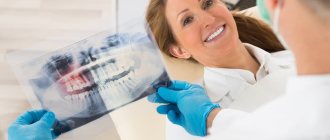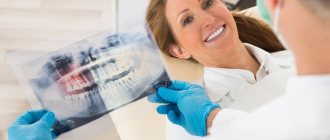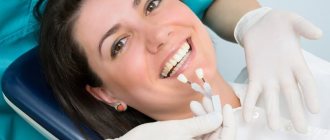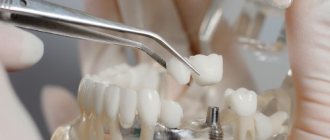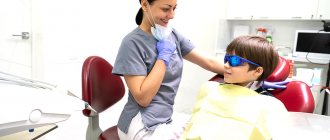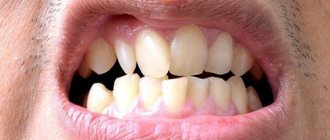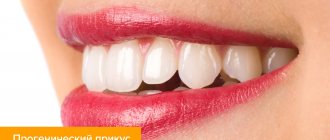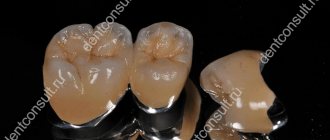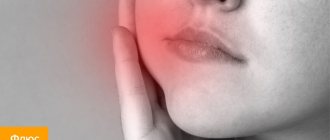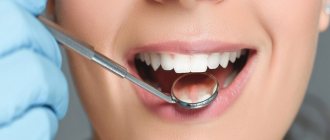The child’s health is most important to us, and the desire to detect and correct bite problems in a timely manner is highly commendable. Crooked teeth are visible from childhood, but this can almost always be corrected in preschool and school age, preventing the prospect of wearing braces.
Meanwhile, photos of crooked teeth in children leave an indelible impression on parents, so that even a minimal deviation from the norm in their own child seems critical. Don't panic or worry ahead of time. Pay attention to the position of baby teeth, compare it with the photographs given in the article and draw conclusions about the need for a visit to the orthodontist.
Vanessa Paradis
Source: @vanessaparadis__
47-year-old Vanessa Paradis has never been embarrassed by the gap between her teeth. On the contrary, the diastema helped the actress receive many lucrative contracts. The Chanel fashion house, together with the Colette boutique, has released a limited edition of brooches in the shape of Vanessa’s slightly open mouth.
Some girls even came to the dentist's office asking for the same gap to be made.
Overview of correction methods
Each method of correcting crooked teeth has its own characteristics. To figure out how to correct very crooked teeth, consider all the means that are used for this:
- Braces. These are small plates made of ceramic or metal that are attached to each individual tooth and connected to each other with a special arch. The plates apply uniform pressure on the teeth, gradually leveling their position. Most models of braces are installed on the front part of the teeth, so the plates are visible when speaking. But there are also special, lingual braces. They are placed on the inside of the teeth. This design is more expensive, but it does not spoil the smile at all.
- Mouthguards. These are removable plastic structures that the patient can remove and install himself. It is important that the more often the trays are used, the faster a positive result will be achieved. Typically, mouthguards are used to correct crooked front teeth. The mouth guards themselves are used to correct the bite in children, and they are often placed on adults only to consolidate the achieved result.
- Trainers. Removable devices that are worn at night. They are used only to correct minor malocclusions and crooked teeth.
- Plates. Made from plastic or metal. They are attached to teeth or crowns with special hooks. Most often used to correct bite in children with small defects.
Veneers. In fact, these are onlays that do not eliminate a tooth defect, but only hide it. Therefore, the question of whether veneers will correct crooked teeth can have only one answer: it is physically impossible if the entire dentition is deformed. But in fact, installing veneers on crooked teeth will help if their surface is uneven. In this case, veneers will simply hide the desired areas- Lumineers. Their installation also allows you to correct minor defects. In fact, lumineers are similar to veneers: they are also glued to the surface of the tooth to level it. But lumineers are thinner than veneers, although this does not affect their strength.
- Restoration and prosthetics of crooked teeth. This is a special type of treatment in which each tooth is straightened individually with crowns or composite material. Under the light of a special lamp, it quickly hardens and is completely indistinguishable from an ordinary tooth. The only disadvantage of composite restorations for crooked teeth is that the material can be stained with food coloring.
Sometimes even braces or veneers are not enough to straighten crooked teeth. A crooked tooth can be corrected with a crown, but if the dentition is deformed due to the eruption of a wisdom tooth or anatomical abnormalities of the jaw, surgical intervention may be required. For example, straightening the dentition in some patients can only be done by removing a wisdom tooth, which puts pressure on neighboring teeth and moves them.
Kirsten Dunst
Source: @kirstendunst
At the age of 12, Kirsten Dunst starred in the thriller Interview with the Vampire. The actress did not need to wear fake fangs, she had her own. Filming ended, but Kirsten did not correct the defect. The star’s enamel has also noticeably darkened, but this also doesn’t bother her much.
How to straighten crooked teeth?
The selection of a means for straightening crooked teeth is carried out according to the type of anomaly and taking into account the patient’s age.
To correct malocclusion in children, removable plates or trainers are used. They perform several functions:
- align the position of teeth and jaws;
- normalize muscle function;
- relieve excess pressure from the jaws that the tongue and cheeks exert during conversation or eating.
The use of removable corrective devices is effective only up to 10-12 years. After this, the child develops a permanent bite, which can only be corrected with special mouth guards or braces.
Modern dentistry provides a huge selection of braces. Most often they are installed on the outer surface of the teeth. Unfortunately, they are noticeable during conversation and spoil the aesthetic appearance of a smile. If the aesthetic factor plays a key role, you can install special lingual braces. They are placed on the inside, so the adjustment occurs almost unnoticed by others.
Katy Perry
Source: @katyperry
Unlike her colleagues, Katy Perry doesn’t like her smile, but she’s not going to change it either. According to the star, only children should wear braces.
These teeth are the poison of my beauty. I would like them to be perfect. And they are so crooked, as if they were not teeth, but rocky mountains,” Katie said self-critically in an interview.
Why do teeth become crooked?
It is quite difficult to figure out why teeth are crooked, since there are many reasons for this anomaly. But there are factors that help explain why teeth grow crooked:
- Personality characteristics: narrow jaw and large teeth that simply do not have enough space in the mouth to grow straight.
- Bad habits: thumb sucking or using a pacifier for too long in children, lip biting, pencil chewing. All these habits lead to the fact that the teeth do not close completely, and the upper or lower jaw lengthens.
- Refusal to treat baby teeth. Unfortunately, there are still dentists who claim that caries in baby teeth does not need to be treated and simply remove the child’s diseased tooth. This cannot be done, since early removal of a baby tooth will lead to displacement and curvature of the entire dentition.
- Mouth breathing: If a person breathes only through the mouth, the shape of the palate gradually changes, which can also cause crooked teeth.
But most of the factors associated with crooked front or any other teeth are laid down in childhood, even in the womb. During the formation of the fetus, dental anomalies of one of the parents can be transmitted to the baby. But even if a child does not have a genetic predisposition, crooked teeth may still appear.
The reasons will be explained by orthopedic dentist of the 32Dent clinic Lyudmila Vladimirovna Ponomareva: “Most dental problems begin in childhood. This also applies to the causes of crooked teeth. If a baby is fed from a nipple with a hole that is too large, he will not make any effort to suck and jaw growth will not be stimulated. This also applies to nutrition: a child’s diet should contain a certain amount of hard food. Thanks to this, baby teeth wear down evenly and jaw growth is stimulated.”
But even if you know exactly why your teeth are crooked, it doesn’t change anything. Unfortunately, there are few qualified dentists who can eliminate malocclusion, and correcting crooked teeth in adults and adolescents is a rather lengthy process.
Kate Middleton
Source: @katemiddletonphotos
The Duchess of Cambridge is adored all over the world, although her appearance is far from the generally accepted ideal. Kate Middleton has an overbite that causes her chin to protrude. The duchess did not dare to undergo serious interventions, but experts say that Prince William’s wife probably had veneers.
Types and degrees of curvature
The method of restoring crooked teeth depends on the degree of curvature and the age of the patient. On the Internet you can find many photos of celebrities with crooked teeth before and after restoration. How does the correction process work?
First, let's look at the degrees of curvature:
- First degree: refers to individual teeth that differ from the rest in shape, size or location.
- Crooked teeth 2 degrees: incorrectly formed dentition due to the simultaneous eruption of several teeth at once.
- Third degree: curvature at the level of the jaws, which leads to improper closure of the upper and lower dentition.
In addition, the front teeth, incisors or wisdom teeth may be crooked. The front ones, as a rule, change shape or location due to external factors: injuries, the habit of chewing a pen or seeds.
Orthodontist Anastasia Sergeevna Arkhangelskaya from the 32 Dent clinic explains why teeth grow crooked in adults: “In adulthood, people often have to have their teeth removed. If an implant or other prosthesis is not installed in their place, the dentition may become crooked. In addition, the development of dental anomalies is facilitated by the eruption of wisdom teeth. This is especially true for people with a narrow jaw, which simply does not have enough space for large wisdom teeth.”
If you have a problem similar to that described in this article, be sure to contact our specialists. Don't diagnose yourself!
Why you should call us now:
- We will answer all your questions in 3 minutes
- Free consultation
- The average work experience of doctors is 12 years
- Convenient location of clinics
Single contact phone number: +7
Make an appointment
Presence of cracks
Small gaps between the teeth may not cause inconvenience and, as such, are not a malocclusion (but may accompany it).
Trema – spaces between teeth
But there can also be gaps between rows of teeth.
- Sagittal fissure: lack of contact between the lower and upper jaws in the frontal region in the direction from front to back.
Sagittal gap
That is, the front teeth do not close, and the occlusion of the lateral chewing teeth is incorrect.
- A vertical gap is a lack of contact between teeth from left to right.
That is, it is impossible to completely close the teeth; there remains a gap. It can be in the anterior section (more often) or in the lateral section (less often). If there is at least a small gap when the teeth are completely closed, the bite is considered open.
Vertical slot
Jaw position and teeth closure
Normally, the lower jaw should neither protrude forward nor be pushed back relative to the upper jaw. Ideally, the upper teeth touch the lower teeth and slightly overlap them - by about a third. This means that when the teeth are tightly closed, the lower teeth will be visible.
- The lower teeth are not visible at all; the upper teeth completely cover them? Perhaps it's a deep bite.
Deep bite: the lower teeth overlap the upper teeth too much, the height of the bite is reduced
- Are the lower teeth in front of the upper teeth, especially in the anterior region (front)? Probably mesial overbite.
Mesial bite: the lower jaw is pushed forward
- The upper teeth do not overlap the lower ones, but rather touch them with their cutting edges? It appears to be a straight bite.
Straight bite: the smile may look beautiful, but the closure is incorrect and there is no overlap
- Do your upper teeth protrude too far forward, but your lower teeth cannot reach them? This happens with a distal bite.
Distal bite: the lower jaw does not reach the upper jaw
- The dentitions intersect with each other. On one side, the upper teeth protrude forward, and on the other, the lower teeth. It is imperative to consult an orthodontist, as this may be a crossbite.
Crossbite: the dentition intersects like a “scissors.”
It is necessary to examine not only the front teeth, but also the lateral teeth in a closed state. If only one lower tooth protrudes forward and covers the upper one, you can already think about a crossbite (only a doctor can make a final diagnosis).
Teeth after veneers
Life after veneers changed literally by 500%. When she came to my photo shoot, she told me a little story. After installing the veneers, Maria rested in the mountains, where everyone approached her absolutely, everyone wanted to meet her, in all the bars she was constantly offered any, even the most expensive, drinks and gourmet dishes for free. She says that people love her madly, and now there is no end to her fans.
She is absolutely happy!
Maria became a fantastically beautiful model - with a very beautiful color, very straight teeth, and a confident look into the future. And all this happened without braces, without aligners, without wearing them for 3 years, without forever wearing retainers. No orthodontic costs. As they say, feel the difference between braces and veneers.
She achieved a very comfortable situation in her mouth in a fairly short period of time. The question of what to get: “braces or veneers” is a thing of the past for Maria.
How to prevent pathology
It is necessary to create optimal conditions for the proper development of the jaws and dentition from an early age:
- Treat your baby’s runny nose in a timely manner and make sure that the little one breathes through his nose.
- Do not allow your child to keep foreign objects in his mouth. An exception may be a pacifier, but it is advisable to use its orthodontic variety.
- From the moment the first teeth erupt, periodically give your baby solid food for jaw development. With age, it should take up a significant part of the child’s diet.
- Don't let your little explorer touch the growing tooth. With constant pressure from even a tiny finger, it can continue its development with curvature.
From the age of two, visit the dentist regularly, at least once every six months. This is not only the prevention of oral diseases, but also an excellent opportunity to avoid or correct orthodontic smile imperfections in a timely manner.
If you apply such preventive measures in life, there is a high chance that your baby will initially develop a beautiful and even smile. Naturally, not everything will be as perfect as you want. But at least, if any defects arise in the development of the dentofacial apparatus, their elimination at an early stage will not take much time and effort.
If the baby has serious problems with his teeth, then the sooner you start solving them, the better. While the baby is going to kindergarten or primary school, he is unlikely to be alone in terms of using the same braces or plates. Therefore, he will not be too embarrassed and will endure the correction process in relative psychological comfort. But if you wait until high school or university, the child cannot avoid developing complexes in addition to dental problems, especially for young ladies.
Celebrities who proved that braces are beautiful
Many celebrity personalities have bite problems and correct them with braces. Overlays have become a kind of feature that adds zest to the appearance. Among the large list of stars with braces are the following:
- Tom Cruise;
- Angelina Jolie;
- Sydney Crawford;
- Gwen Stefani;
- Emma Watson;
- Prince Harry;
- Megan Fox;
- Cristiano Ronaldo;
- Nicolas Cage;
- Miley Cyrus.
Teeth straightening – the price of the issue
Methods for straightening crooked teeth have been described above. Now let's take a closer look at the cost of each of them:
- Installation of braces. The cost depends on the type of system used. For example, the price of sapphire braces starts from 20 thousand rubles. Metal systems are cheaper (about 10 thousand rubles), and the most modern, invisible lingual braces will cost 50 thousand.
- Correcting small bite defects with mouth guards costs from 50 thousand rubles per jaw.
- An initial course of bite correction with a trainer from a qualified specialist will cost 15 thousand rubles. The advantage of this treatment method is that it is absolutely painless, does not harm the teeth and can be used to correct the bite even in young children.
- Veneers and lumineers. The cost of restoring teeth using these plates depends on many factors. First of all, the price varies depending on the material and the manufacturing company. In addition, the final cost depends on the number of teeth being corrected. On average, the price of one veneer ranges from 10 to 12 thousand rubles including installation.
- The cost of dental restoration is determined individually, depending on the materials used and the location of the teeth. For example, the price of composite restoration of crooked front teeth starts from 7 thousand rubles. It is cheaper to restore side teeth: from five thousand.
If you plan to install crowns, the price will depend on the material used. In addition, additional costs may arise during treatment for adjustments to alignment systems.
Conclusions. Expert advice
Crooked teeth can appear for various reasons, ranging from heredity to bad habits. Both primary and permanent elements of the dentition grow incorrectly, and the “eights” of wisdom are almost always not formed correctly enough. Tooth curvature is not only a childhood disease. Trauma, age-related changes, or even a love of chewing pencils can cause problem teeth in adults.
It doesn’t matter whether you have one or several crooked incisors, you definitely need treatment. The first thing you need to do is contact a therapist, and then an orthodontist, who will decide what to do with crooked teeth in your situation. There are quite a few treatment methods, each with its own pros and cons. Sometimes the doctor decides to combine several methods, for example, installing braces and prescribing wearing a trainer. In especially severe cases, surgery is used.
Lack of treatment is very dangerous, because when teeth are crooked, the load during chewing is distributed unevenly. The longer the patient waits, the more severely some elements of the dentition wear out, leaving others without work. This leads to premature loss of molars and incisors. This is followed by bone depletion and expensive implant surgery, if it is possible at all. Avoiding such a development of events is not so difficult: you need to visit the orthodontist in time and correct the bite.
Bottom line
The myth that braces ruin your smile has long been dispelled. Orthodontic structures correct malocclusion, straighten teeth and make a person more attractive. However, on the path to beauty you have to go through this difficult moment and wear braces for some time. To alleviate discomfort during the treatment period, you should choose beautiful designs that their owner will like.
Sources
- https://jsmiles.ru/ortodontiya/8-brekety/178-krasivye/
- https://moddam.ru/zvezdi-s-plohimi-zybami-foto
- https://drbreket.ru/znamenitosti-v-breketah/
- https://orto-info.ru/sistemyi-vyiravnivaniya-zubov/breketyi/u-zvezd.html
- https://jsmiles.ru/ulybki/182-brekety-u-zvezd/
- https://rat-felt.ru/zvezdy-v-breketah-fotografii-znamenitostej-do-i-posle.html
Causes of curvature over time
With age, the human body undergoes significant changes. Teeth become loose and shift - they are influenced by forces both within and outside a person’s control. The main ones are the movements of the tongue, lips, and jaws.
One of the most serious causes of displacement is forceful tongue thrusting. It occurs during swallowing.
The teeth are constantly pressing against each other. When the jaw closes, they assume a state of rest. If one of them is missing, the neighboring ones, as well as the opposite one, begin to shift towards the opened space.
With age, the enamel gradually wears away. As a result, they become thinner and weaker. The bottom row grinds down especially quickly. When it cannot withstand the pressure of the top row, it begins to develop crookedly.
Bruxism - jaw grinding during sleep - also contributes significantly to the displacement , severely curving the upper row.
Caries promotes the formation of gaps between teeth, which fill adjacent ones, which contributes to their curvature.
Braces brands that combine beauty and quality
Among the large assortment of brace systems, the best in terms of beauty and quality can be noted:
- Inspire ICE Ormco – small sapphire overlays with high transparency;
- Radiance American Orthodontics – ceramic ligature clasps;
- Spirit MB Ormco – plastic ligature overlays;
- Miso HT Corporation - miniature sapphire staples;
- Elan – self-ligating plastic locks with a metal base;
- In-Ovation L are metal lingual systems that are installed from the inside of the tooth.
On a note!
Ordinary metal overlays can also become original if you use colored ligatures for them.
We start with the upper front teeth
On the upper front teeth, all the composite and all the material from the teeth were almost completely removed. On the fours and fives on top we only had roots. The front teeth were also not distinguished by the presence of large tissues; we also only had roots. Except for tooth 2.2, tooth 2.2 was alive. That is, of the top 10 teeth with which we worked, only 3 teeth were alive, and 7 were previously depulped.
It turns out we had 4 chewing teeth of which only the root remained, and all the composite fillings were removed from the 3 front teeth; they went almost to the root.
We slightly drilled the root canal
in order to install single-module veneers with the root part.
See what veneers look like with the root
:
Features of treating crooked teeth for veneers in the lower jaw
By the time the lower teeth were turned, we had already prepared a project, which I relied on - we displayed it on a huge 43-inch monitor. We did something incredible. Taking into account gum correction (the gum was corrected at tooth 1.1)
Below was a very complex project. After we sharpened we received photographs and a real view of the lower teeth
:
Once trimmed, it looked incredible. It felt like the teeth were completely straight from the start.
Despite the fact that the lower teeth were actually very crooked, we were able to build the ideal geometry of the dentition. Some teeth, such as 3.1, we “pushed” inward a little, and then did the same with teeth 4.1, 4.3 and 3.3.
We filed down the central lower teeth very much from the inside ( BUT!
We didn’t reach the nerve). We “moved” teeth 3.2 and 4.2 outward, filing down their inner part. As a result, as I said earlier, we did not depulpate a single tooth.
The teeth from below, from fang to fang, look quite even, that is, we managed to reach an even plane, an even line. Since we ground teeth 3.2 and 4.2 both inside and out, we decided to make practically crowns on them, that is, the contact points between the teeth remained intact, and the front and back parts were ground as if for a crown.
What kind of braces do the stars put on?
Most celebrities prefer to hide the fact that they are having their smile fixed and want their fans to think they are naturally perfect. But the paparazzi found out which teeth straightening systems are popular among the stars:
- sapphire – transparent, invisible and suitable for photography;
- lingual – braces that are installed on the inside of the teeth, they are invisible to others;
- Ceramic braces are noticeable and match the color of the teeth. Stars wear these braces when on vacation, when they don’t have to be afraid of meeting paparazzi.
Stars are people just like us. They are not born perfect, but their job is to always look perfect and delight us with their talent. Therefore, they always resort to the services of aesthetic dentistry to make their image perfect, and to become a role model for their many fans.
Signs of correct bite
Normally, the jaws make close contact when closing. In this case, the upper teeth cover the lower ones by about a third, so that the palatal tubercles of the former touch the incisors of the latter. There are no gaps between them both when the mouth is closed and during chewing. The facial proportions are symmetrical.
Also among the characteristic features:
- absence of speech defects;
- no clicking or other similar discomfort in the joint;
- ease of biting food.
And vice versa, if problems are observed in any of the points just listed, this is an alarm bell and a reason to consult an orthodontist, and immediately, without waiting for the situation to worsen.
What could be the consequences?
The consequences of ignoring the curvature of the dentition can be very disastrous:
- In crowded areas, favorable conditions arise for the development of pathogenic microflora. This factor contributes to the occurrence of inflammatory diseases .
- As a result of increased pressure on certain teeth, atrophy of some areas of the periodontium . This causes periodontal disease and greatly weakens the dentition.
- Decline in the functionality of the dentofacial apparatus . Insufficiently chewed food entering the stomach causes gastrointestinal diseases.
To avoid such problems, it is worth engaging in prevention and preventing curvature.
